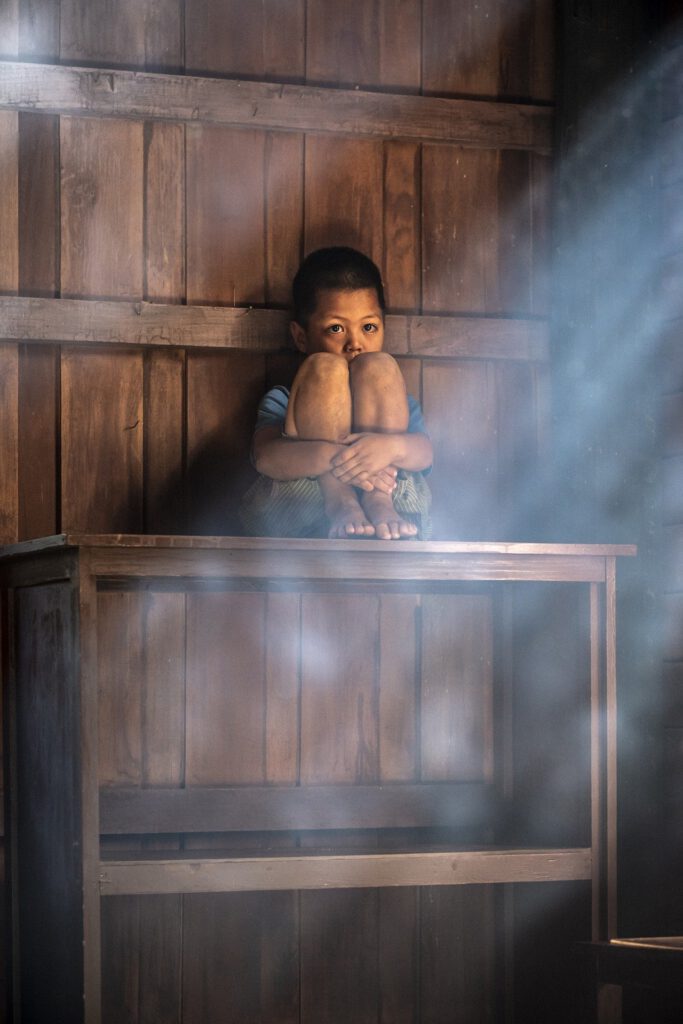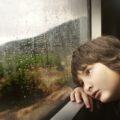Anxiety Affects Understanding Childhood Fears and Anxieties
Anxiety Affects -Understanding Childhood Fears and Anxieties
- Anxiety Affects -Understanding Childhood Fears and Anxieties
- Anxiety affects – components of the pathogenic conflict
- The anxiety affects associated with pathogenic conflicts are differentiated according to developmental stages:
- Anxiety affects – fears typical of age
- Anxiety affects – anxiety disorders in childhood and adolescence
If the child’s developmental needs are not met or refused by the parents or another caregiver in a way, that is appropriate for the child’s self and in a realistic framework, so-called pathogenic conflicts arise between conflicting impulses, which in the long term cannot find a solution, that is appropriate for both, their age and personality. These conflicts lay the foundation for difficulties when the individual will be confronting the corresponding development task in later life.
Due to the reactivation of id impulses, pathogenic conflicts are characterised by an unbearable level of fear and by unconscious defense mechanisms against them.
Anxiety affects – components of the pathogenic conflict
Bio-psycho-social stages of development of basic needs
Maturation of the primarily autonomous ego functions (perception, thinking, judgment)
Interactional experience with mother, father, siblings (primary caregivers)
Internalisation of the experience in the psyche, which is reflected in structures like ego, id, super-ego and self-ideal.
The anxiety affects associated with pathogenic conflicts are differentiated according to developmental stages:
| Age | Typical anxiety affects |
| First months | Fears of annihilation |
| First year of life | Fear of loss |
| First and second years of life | Fear of separation |
| Second year of life | Fear of aggressive impulses |
| Third and fourth years of life | Fear of loss of love and punishment |
These anxieties mobilise – as a signal – certain defences and thus help to anticipate threatening internal situations. Later, during puberty and in young adulthood, the resulting basic structures are overlaid by relationships with others through further experiences, that contribute to stabilising or weakening the defence system. If the defence is unstable when the conflict is mobilized again, either an action (instinctual satisfaction) or a disguise of the instinctual desire is manifested in a symptom. The conflicts are hereby expressed symbolically (e.g. avoidance of phobias). Therefore, the symptom is a symbolic compromise for the pathogenic conflict. This reduces the signal anxiety (primary gain). The defense need not be intrapsychic only. There are also mechanisms within the family or in a relationship that can be recruited for defence purposes (interpersonal or psychosocial defence).
Anxiety affects – fears typical of age
Fear is always present when internal, external or internalized conflicts arise. It should be noted that different forms of fear are also a development phenomenon. Typical fears occur at different ages, which have nothing to do with the above-mentioned mechanisms of signal anxiety and pathogenic conflicts.
| Age | Trigger | Age-typical fear |
| 0 bis 6 months | Sensory stimuli, loss of attention | |
| 1/2 – 1 year | Strangers, separation | |
| 2 – 4 years | “Monsters”, burglars, darkness | Sseparation anxiety |
| 5 – 7 years | Natural disasters, injuries, animals, content from the Internet and television | Animal phobia, blood phobia |
| 8 – 11 years | Performance failure | School anxiety |
| 12 – 18 years | Rejection by peers | Social phobia, agoraphobia, panic disorder |
Anxiety affects – anxiety disorders in childhood and adolescence
Studies have described rates between 9.5% and 18.6% for the so-called “Emotional disorders with onset specific to childhood”. The causes are varied (biological disposition, models at home, parenting style, avoiding coping style). The forms of anxiety disorder are just as diverse at this stage of development. They are primarily exaggerations of normal development trends.
F93.0
Separation anxiety disorder of childhood
- Unrealistic fear that something could happen to a caregiver, or that the child would otherwise be separated from the caregiver
- Difficulty separating at night
- Nightmares on separation issues
- Suffering from separation or in anticipation of separation
- Beginning before the age of six
- At least four weeks in duration
F93.1
Phobic anxiety disorder of childhood
- At the beginning of the disorder, development phases typical anxiety, but with excessive expression
- Anxiety disorder
- At least four weeks in duration
F93.2
Social anxiety disorder of childhood
In this disorder there is a wariness of strangers and social apprehension or anxiety when encountering new, strange, or socially threatening situations, that are are both unusual in degree and accompanied by problems in social functioning.
- Anxiety and avoidance in social situations
- Reduction of social relationships
- Good relationships with friends or family members
- At least four weeks in duration
- No other anxiety disorder
F93.3
Sibling rivalry disorder
The majority of young children usually show some degree of emotional disturbance after the birth of an immediately following younger sibling! An emotional disorder is only present if both the extent and the duration of the disorder are excessive and are accompanied by disorders in social interactions.
Synonym: sibling jealousy
- Intense negative feelings towards the younger siblings
- Outbursts of anger, oppositional behavior
- Beginning up to six months after the birth of the sibling child
- At least four weeks in duration
F93.80
Generalised anxiety disorder in childhood
- Intense worries and fears for at least six months related to certain events and activities
- Difficulty controlling these worries
- Sleep disorders, restlessness, muscle tension
- Anxiety in at least two situations
- Beginning before the age of 18
- Significant suffering or impairment
Treatment must involve parents on the one hand (they often serve as a model) and work with the child on the other. Techniques of cognitive behavioral therapy (desensitization or flooding in connection with reaction management) have proven particularly useful. In addition, children and adolescents can benefit from the teaching of relaxation techniques.
To date, no drugs have been approved for the treatment of anxiety disorders in children and adolescents. Selective serotonin re-uptake inhibitors (SSRI) are occasionally used off-label.





